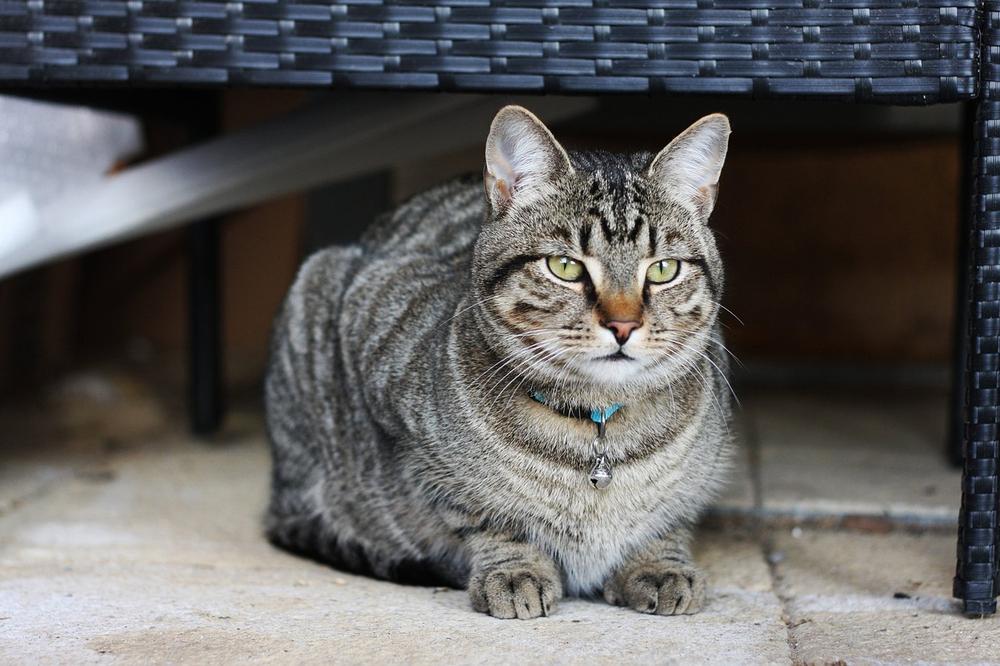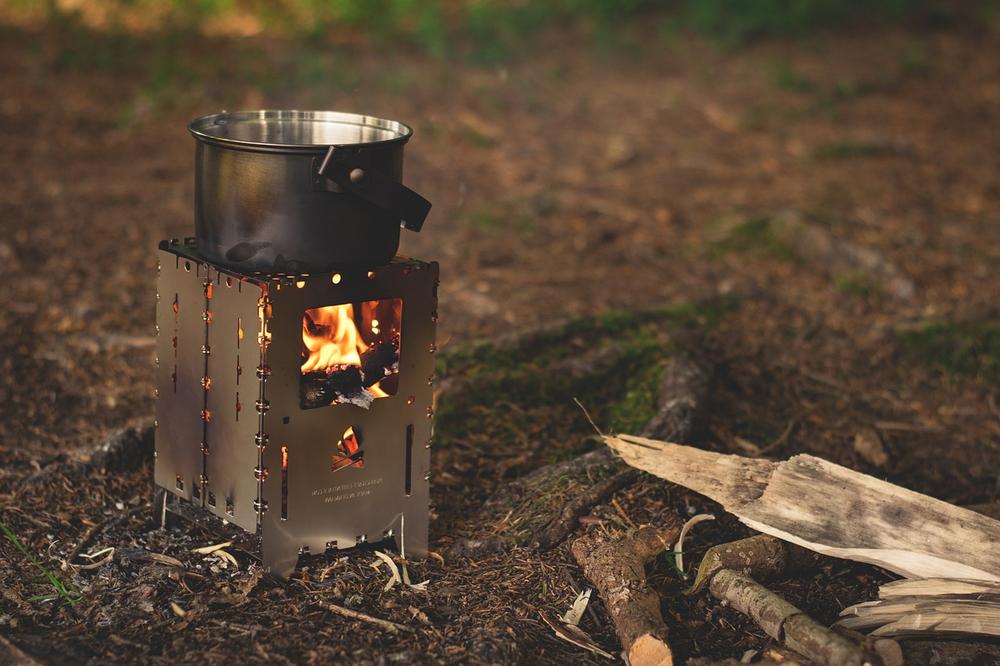Is Cat Litter Flammable?

Got questions about your cat litter and its potential to turn your home into a fiery inferno?
Worried that your feline friend's litter box could be a ticking time bomb? 😮
I understand, I really do.
It's normal to have those thoughts swirling in your head.
But let me tell you this:
We're about to dive into the world of cat litter flammability, separating fact from fiction.
Buckle up, and let's quench those burning questions.
Flammability of Kitty Litter and Litter Box Hazards
Exercise caution and prevent fire hazards
You, as a responsible cat owner, need to be careful when it comes to the flammability of kitty litter and potential dangers related to your cat's litter box. One essential tip to please bear in mind is to avoid placing anything that can catch fire near the litter box, especially when using deodorizers that generate heat.
Certain items like tissues or paper towels can easily spark a fire if they come into contact with these agents.
Cat litter: Absorbent and odor-reducing
Now let me explain the significant role cat litter plays in your cat's life.
It serves as a highly absorbent material that effectively eliminates moisture and odors from the litter box.
Besides that, it provides a suitable surface for your furry friend to bury their waste, ensuring cleanliness and hygiene in your home.
Flammability concerns and safety precautions
While cat litter itself doesn't spontaneously burst into flames, its flammability varies depending on its composition.
Dry litter, which has lower moisture content, poses a higher risk of catching fire.

But here's where things get really dangerous:
Burning cat litter releases toxic fumes, smoke, and even carbon monoxide. These pose serious risks to both humans and animals.
Some clay-based litters may even contain flammable additives, further increasing the potential fire hazard.
To keep your home safe, ensure to keep plastic litter boxes away from hot surfaces and never use them as ashtrays.
You must be mindful of these safety concerns and take necessary precautions when using cat litter in households.
But what about the potential health risks associated with cat litter dust?
Let me delve deeper into this crucial issue...
Is Cat Litter Dust Flammable?
High humidity levels can make certain cat litters more flammable.
If you have clumping litter with sodium bentonite and crystalline silica dust, be careful.
While most cat litters aren't flammable, you must know the health risks.

Both humans and cats can have respiratory issues if exposed to dusty litter.
To reduce these risks, use an air dehumidifier near the litter box.
This will lower moisture levels and decrease the chance of ignition. Also, make sure the room is well-ventilated and choose a dust-free litter.
Regular vacuuming will help remove potentially flammable particles from the environment.
What Types of Cat Litter Are Non-Flammable?
If you're worried about your cat litter catching fire, here's what you need to know:
- Synthetic litters, like clay and silica gel crystal litters, don't pose much of a fire risk.
- Most clumping clays are safe, except for crystal litters made of bentonite clay.
- Natural litters, made from wood shavings, paper, or wheat, have a higher chance of burning than synthetic options.
- Biodegradable litters made of wheat bran and paper can burn quickly and even start fires on their own. 🔥
- Every type of cat litter has its own level of flammability, so choose one that fits your safety needs.
- Don't forget about absorption, clumping, odor control, and how easy it is to scoop when picking the right litter.
Choosing non-combustible litters ensures the safety of both your cat and your residence.
But here's where it gets interesting...

What are some natural alternatives to traditional cat litter that offer lower flammability?
And what materials can be used in emergencies?
Let's dive into the world of eco-friendly options and unexpected solutions for your feline friend.
Hang on tight!
Safer and Eco-Friendly Alternatives for Cat Litter
You have some choices when it comes to cat litter that are safer for your furry friend and better for the environment.
- Instead of regular litter, you can try using shredded coconut husks or pine pellet bedding. They're natural, eco-friendly, and less likely to catch fire.
- In a pinch, potting soil or sand can be used as cat litter. Just make sure they're clean and safe for your cat to use.
- It's best to steer clear of homemade litter boxes made from wood or cardboard because they can be fire hazards. Plastic or metal boxes are a safer option.
- Covered litter boxes are a good idea because they prevent flammable objects from accidentally falling in and causing fires.
- Biodegradable cat litter is a great choice because it breaks down after disposal, uses eco-friendly materials, and reduces the risk of toxins.
- Joining cat lover communities on Facebook can be helpful. You can exchange experiences and get advice on different types of cat litter.
- When choosing litter, watch out for scented options that may contain harmful synthetic fragrances. Look for biodegradable litter that's treated to be less flammable or made from low-risk materials like paper or wheat.
- Plus, clay-based litter can come in handy for putting out small kitchen fires or preventing grill fires by creating a layer at the bottom. 😺
Using these alternative cat litter options not only keeps your cat safe but also helps you live a more environmentally friendly lifestyle.
To make cleaning up after your cat as easy and stress-free as possible, I've got you covered with my guide on how to properly and effectively clean cat poop off a blanket.
While discussing safer and eco-friendly alternatives for cat litter, I highly recommend checking out my article How to Clean Cat Poop Off the Blanket.
In it, I provide useful tips and techniques to help you tackle this challenging task.
Tips for Properly Disposing of Used Cat Litter
I've got some pointers for you on how to take care of your used cat litter. Pay attention to these 10 tips:
- Don't chuck that cat litter into regular trash cans or bins out in the scorching sun or extreme heat.
- Stick to what the manufacturer recommends when it comes to getting rid of that stuff.
- Be extra careful if your cat litter contains clays because they can turn up the heat and pose fire risks.
- Dry, flammable litter? Burning it is a no-go. Toxic fumes and fires are not your jam.
- Flushing the litter down the toilet is risky business, with high chances of blocked pipes. So, avoid it.
- When handling used cat litter, put on gloves and a mask. Keep those bacteria and germs at bay.
- Got an outdoor compost pile? Go deep with that cat litter burial and use enzymes to break it down and curb odors.
- If your garbage cans get toasted under the blazing sun, keep the cat litter away from them.
- Toss the cat litter in pet waste receptacles whenever you can find 'em.
- Wanna go green? Try biodegradable or eco-friendly cat litter for easier disposal that's kinder to the environment.
By adhering to these recommendations, you will appropriately dispose of the cat litter, while minimizing health hazards and its negative effect on the environment.
Easy peasy.
Ensuring Fire Safety Around the Litter Box
To ensure you and your cat stay safe from fires near the litter box, here's what you need to do:
- Don't put lit candles, incense, or anything that produces open flames near the litter box. Cats might accidentally knock them over and cause a fire.
- If kids are using candles or open flames around the litter box, keep an eye on them. Make sure they don't mess with electrical cords or knock down flammable things.
- Store cat litter in a cool, dry, and secure place. Keep it away from electric cables or hot water pipes to avoid any fire risks.
- Make sure there's good airflow in the area where the litter box is. Open a window or use a fan if needed. Poor ventilation can increase the chance of a fire starting.
- Put lighters and matches out of reach for both cats and children. Keeping them stored safely will prevent unwanted fires.
- It's always good to have a fire extinguisher nearby in case of emergencies. You'll want easy access to it to quickly put out small fires.
- Keep electrical cords and wires away from your curious cats. They might chew on them or get tangled up, which increases the risk of electrical fires.
And besides these steps, make sure that you teach your kids about the dangers of playing with fire, regularly check your smoke detectors and carbon monoxide detectors, and have an emergency plan ready.

Moreover, position plastic litter boxes at a safe distance from heat sources and install smoke alarms in every room to further ensure fire safety around the litter box.
Fire Safety Tips for Cat Litter Disposal
- Cat litter does not spontaneously combust but can catch fire.
- Dry litter with low moisture content is more flammable.
- Burning cat litter releases toxic fumes, smoke, and carbon monoxide.
- Clay-based litters may contain flammable additives.
- Plastic litter boxes should not be used for extinguishing cigarette butts.
- Cat litter dust is generally not flammable, but some types can cause respiratory issues.
- Good ventilation and regular vacuuming are important to reduce flammability risks.
- Natural litters have higher flammability risks compared to synthetic options.
- Different cat litters have varying levels of flammability and other properties.
- Alternative materials like potting soil or sand can be used as cat litter in emergencies.
- Proper disposal of cat litter is important to prevent fires and health risks.
- Fire safety precautions include avoiding open flames near the litter box.
- Proper storage and ventilation of the litter box area is crucial.
- Safety measures involve keeping lighters and matches out of reach and having a fire extinguisher nearby.
- Installing smoke alarms and positioning litter boxes away from heat sources.
And that wraps up today's article.
Before you leave, can I ask you something? Did my blog post help you out? If it did, I would be extremely grateful if you could share it with your friends and family. Just click on any of the social media sharing icons to instantly spread the word. Thank you so much!
Talk soon,
-Sarah Davis